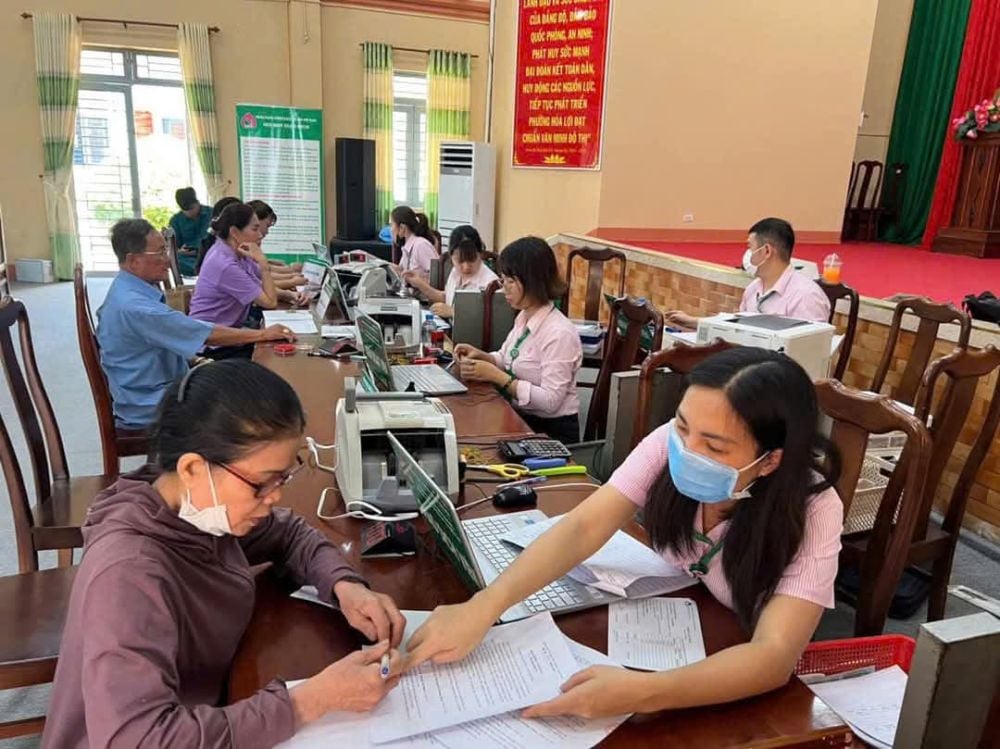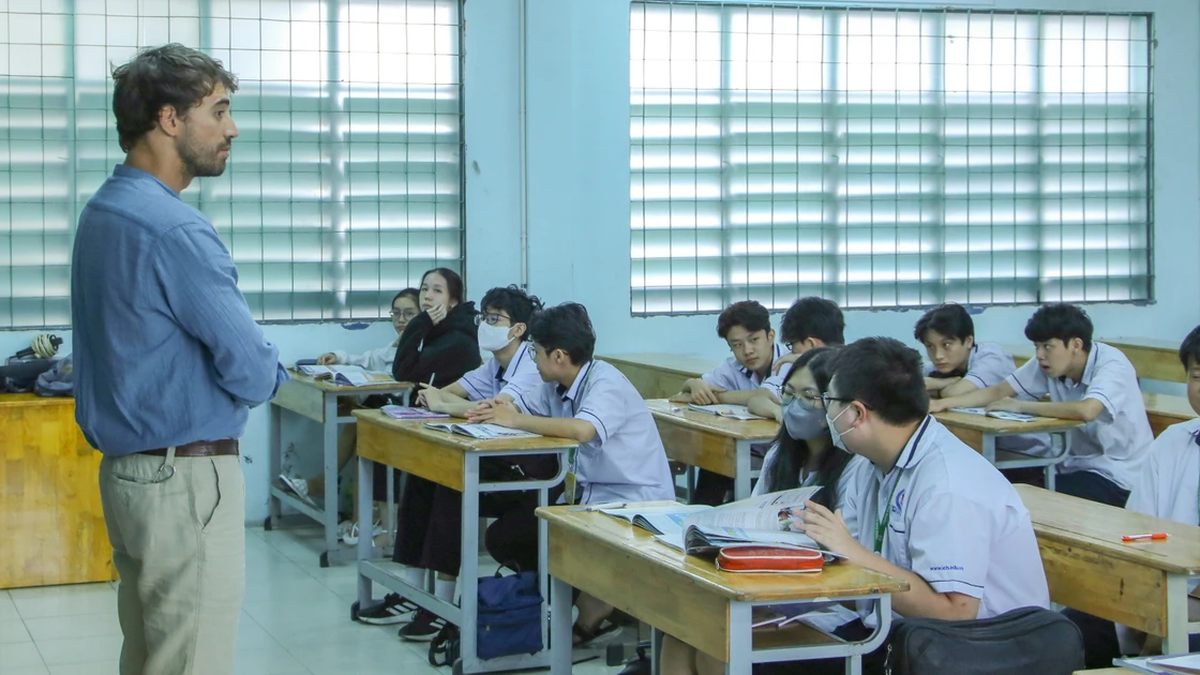
Focusing resources on poverty reduction
By the end of 2024, Binh Duong will have 4,306 poor households out of 404,832 households, accounting for 1.06%. Up to now, the implementation of the National Target Program on Sustainable Poverty Reduction for the 2023-2025 period in the province has achieved the set results.
The "key" to help poor households escape poverty quickly and sustainably is to focus resources on building houses for the poor from programs of great solidarity houses, charity houses, Red Cross houses, and trade union shelters using socialized resources. A typical example is the family of Mr. Nguyen Van Nien in Dinh An commune, Dau Tieng district, a poor household. In October 2024, his family received a house worth more than 100 million VND from socialized resources from the locality. Having stable housing, poor and disadvantaged households like Mr. Nien's family have been motivated to quickly escape poverty. "Not only me but also my children are more excited, taking care of business, saving up to buy more valuable household items. Since having a house, my family's life has improved every day," said Mr. Nien.
Mr. Pham Van Tuyen, Deputy Director of the Department of Home Affairs, said that from 2021 to present, vocational training institutions in the province have provided vocational training to 170,000 students, of which the employment rate after training is more than 90%. The professions that the department and localities organize short-term training, but bring high efficiency, are plant care, animal husbandry, beauty, cooking, hair cutting, driving of all kinds... |
To help poor households quickly stabilize their lives, on average each year, agencies, organizations, businesses and localities in the province focus on building and donating about 100 houses from various sources. Along with that, tens of billions of VND are mobilized to support tuition fees and award scholarships to children of poor households. The poor also have access to free medical services, through programs to give cards and insurance books, supported by local medical facilities.
At the same time, the program to support loans to create livelihoods for poor households to develop the economy and increase income has been highly effective. In the past 3 years, the Social Policy Bank has disbursed hundreds of billions of VND at low interest rates, from which thousands of households have stable jobs. A typical example is the family of Ms. Pham Thi Tinh, residing in An Dien ward, Ben Cat city. 2 years ago, her family was still a poor household in the locality. From a loan of 50 million VND to grow cucumbers and clean vegetables, it has brought a stable income to the family, as well as saved money to build a new house. Also from this preferential loan, the family of Ms. Bui Thi Anh Nhi, in My Phuoc ward, has capital to do grocery business and send 2 children to university.
Over the years, localities in the province have also implemented many other effective poverty reduction models. These include mobilizing social resources to give gifts, necessities, visit the sick, provide monthly financial support; opening "0 VND" markets to support regular necessities for poor households in districts, towns, and cities.

Increase employment for rural workers
Another effective poverty reduction policy of the province is to exempt tuition fees for children of poor households when participating in vocational training classes, creating jobs and stable income. Mr. Pham Van Tuyen, Deputy Director of the Department of Home Affairs, said: “The Department directs vocational schools to select occupations that are suitable for the needs of businesses and local conditions for training. The Department also focuses on training elementary occupations so that farmers can apply them immediately in production. From 2021 to now, vocational training institutions have trained 170,000 students, of which the employment rate after training is more than 90%”.
According to Mr. Pham Van Tuyen, the industries and occupations that the department and localities organize short-term training, but bring high efficiency, are plant care, animal husbandry, beauty, cooking, hairdressing, driving of all kinds. After a few months of vocational training, the locality combines with the job creation loan program to open a business, or apply for jobs at enterprises so that workers can have immediate income. Along with that, the department also mobilizes localities and units to actively support crops and livestock for poor households so that they have conditions to develop their economy...
Ms. Doan Thi Suong, residing in Cau Sat Hamlet, Lai Hung Commune, Bau Bang District, shared: “In the past, because I did not have a stable job, I did whatever people asked me to do, with an unstable income. Two years ago, I boldly registered for a makeup class launched by the locality, then opened a shop at home, from which I had a stable income. During my career, I am willing to pass on my experience to children in the area if needed.” From short-term vocational training classes, in recent years, many people in the area have boldly invested in eateries and restaurants, becoming potential owners, creating many other stable jobs for local workers.
To create stable jobs for workers in general and rural workers in particular, every year, the Department of Home Affairs coordinates with localities and enterprises to organize job fairs in many places. This is a channel connecting job supply and demand, ensuring that workers are not idle or unemployed; creating stable income thanks to jobs, rising up to escape poverty sustainably.
The province's National Target Program for Sustainable Poverty Reduction for the 2023-2025 period ensures that 100% of workers from poor, near-poor, and newly escaped poverty households who need to find jobs are supported with connection, counseling, career orientation, labor market information, and job search support; 100% of people from poor, near-poor, and newly escaped poverty households are supported to buy health insurance. Reduce at least 50% of malnourished children under 16 years old from poor, near-poor, and newly escaped poverty households. Reduce the rate of school attendance deficit of children from poor and near-poor households from 2.3% to 1.2%. 100% of workers from poor, near-poor, and newly escaped poverty households, and low-income workers who need to be supported with appropriate vocational training. Reduce at least 50% of poor and near-poor households lacking access to information using telecommunications services, the internet, etc. |
QUANG TAM
Source: https://baobinhduong.vn/giam-ho-ngheo-tang-viec-lam-cho-lao-dong-nong-thon-a346210.html






















































































![[Infographic] In 2025, 47 products will achieve national OCOP](https://vphoto.vietnam.vn/thumb/402x226/vietnam/resource/IMAGE/2025/7/16/5d672398b0744db3ab920e05db8e5b7d)














Comment (0)